Main Line Plant Health Problems
Our area has a multitude of known plant health care issues that we see regularly, such as tree diseases like aster yellows or phytophthora root rot, insect pest issues like scale insects or emerald ash borer. Other Main Line plant health problems are new to our residents, and we like to help homeowners stay informed about risks to their landscapes. Below we discuss some of these issues.
June 2025 Plant Health Care Update
Two major plant health problems have been widespread this season.
Pachysandra Collapse
Late-season 2024 (September-November) was exceptionally challenging for landscape plants, with 2+ months of no rainfall leading into dormancy. Plant stress prior to dormancy can be very damaging, but we did not expect that there would also be a late-season period of disease infection, taking advantage of plants weakened by drought. Volutella blight (Volutella pachysandrae) is generally considered as a weak pathogen of pachysandra and boxwoods, leading to mild leaf spotting in pachysandra and occasional yellowing of boxwoods.
However, given the weak condition of not-typically irrigated plants like pachysandra in October of 2024, this disease took full hold…extending from typical foliar lesions to stem blight, leading to total collapse of pachysandra beds starting in late fall of 2024 and extending through mid-spring of 2025.
Given that we were able to identify the causal pathogen soon after symptoms started, many properties were treated in fall of 2024, permitting maximum survivorship through spring. Properties that were not treated in fall showed steady decline of pachysandra through April, requiring a) early-season fungicide treatment to arrest disease spread and b) soil optimization to maximize development of disease-free new growth. In all cases (80 treated properties), pachysandra beds have recovered completely, roughly 6 weeks after initiation of treatments.
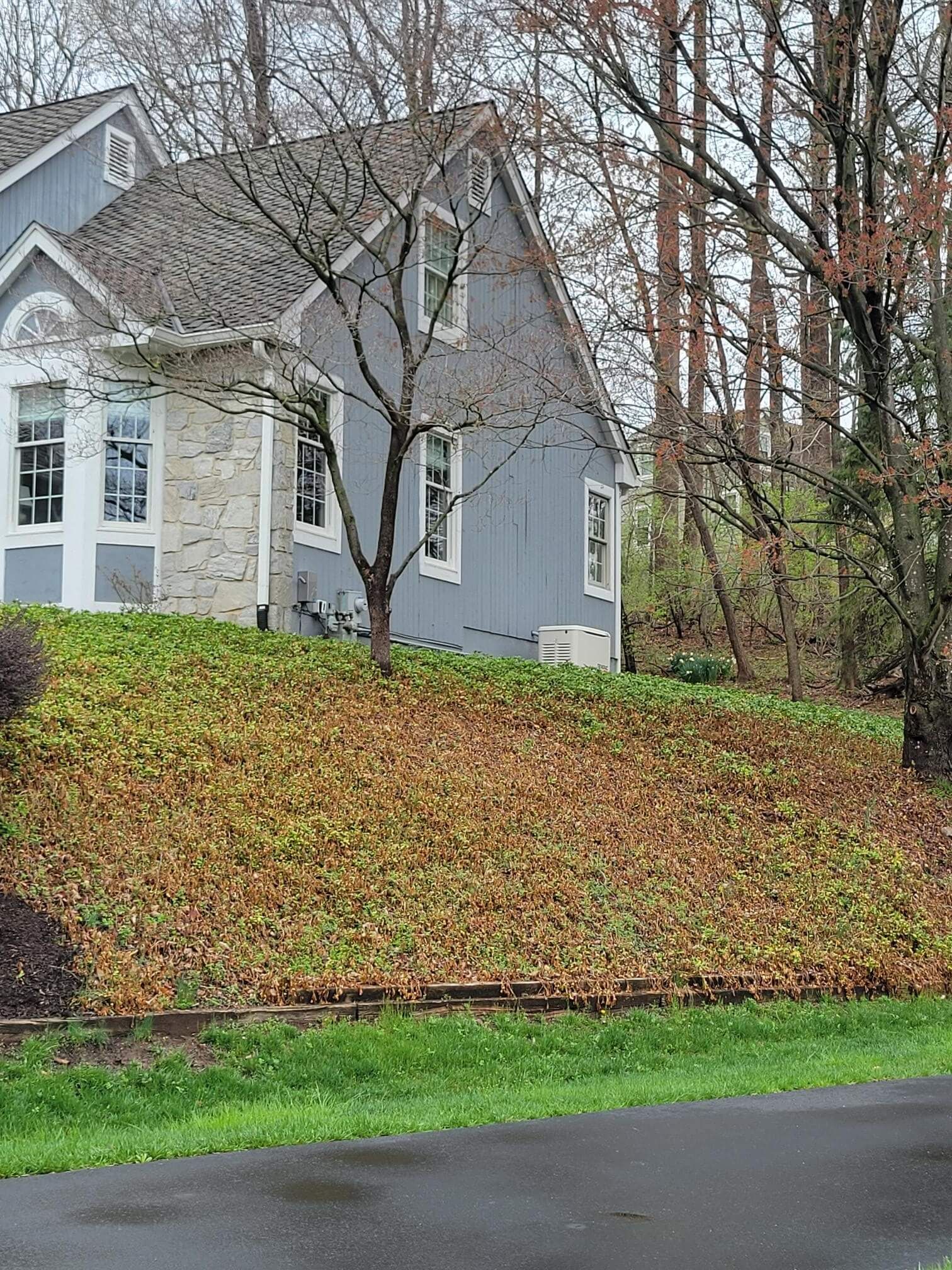
Before
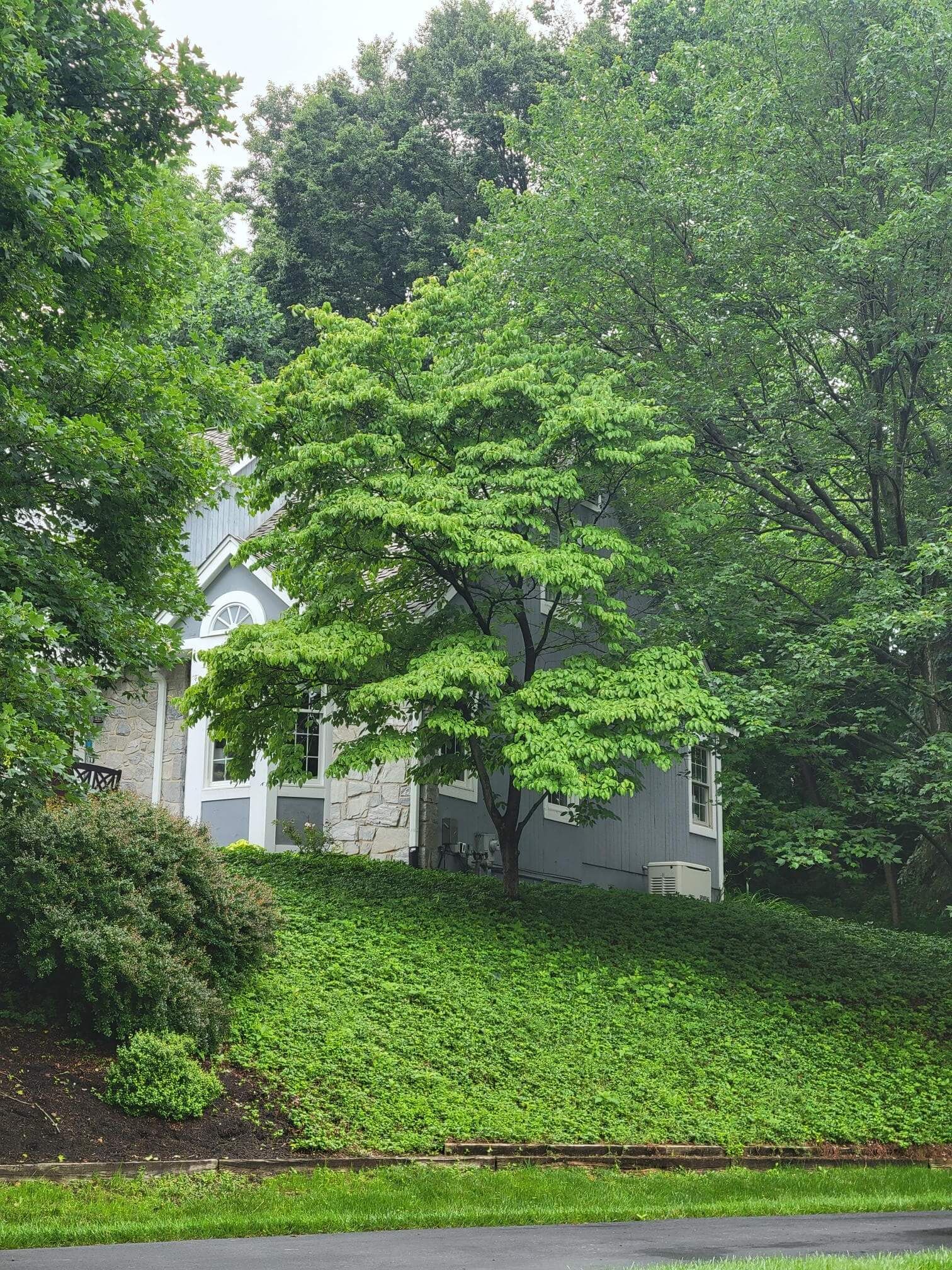
After
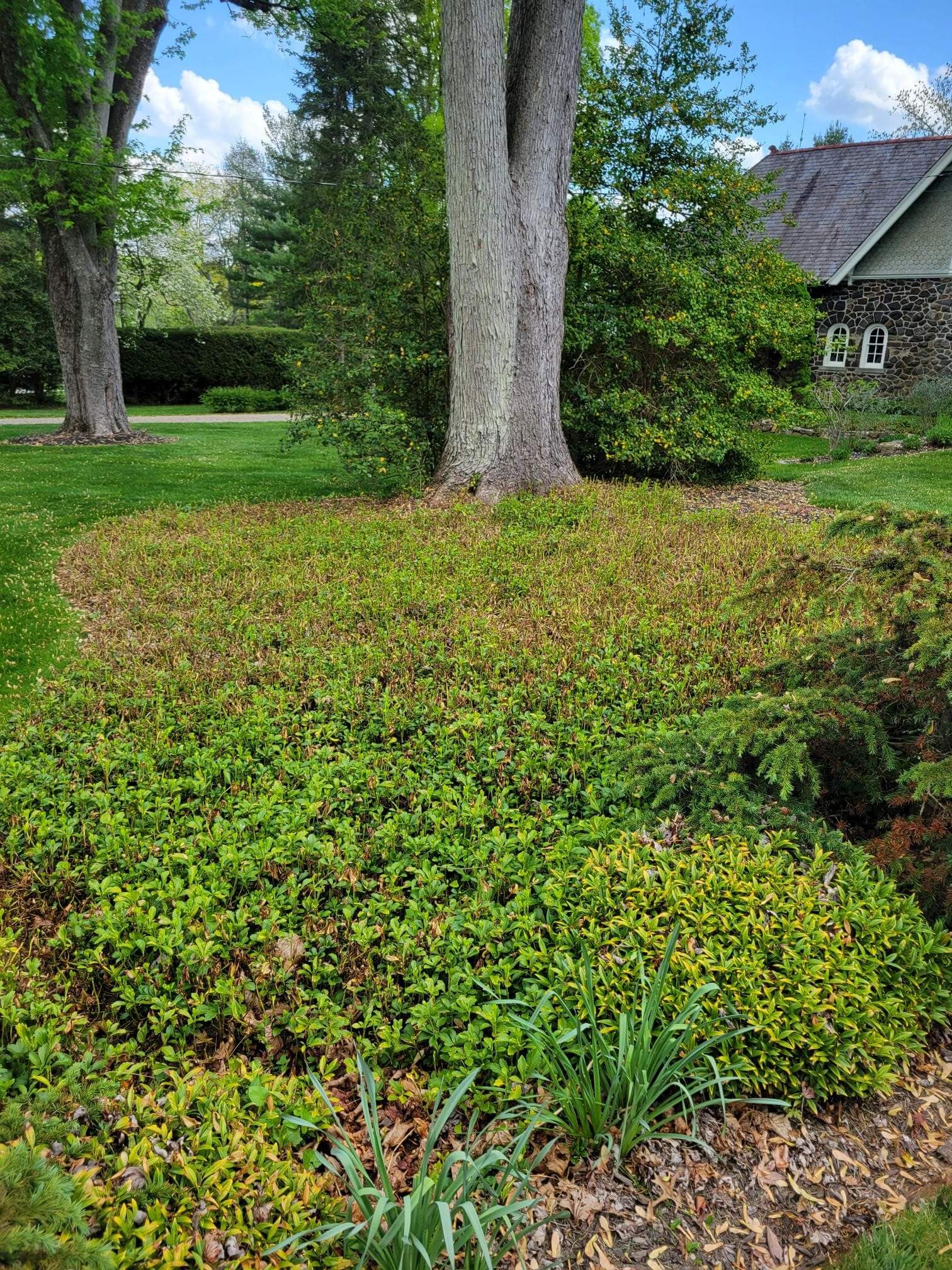
Before
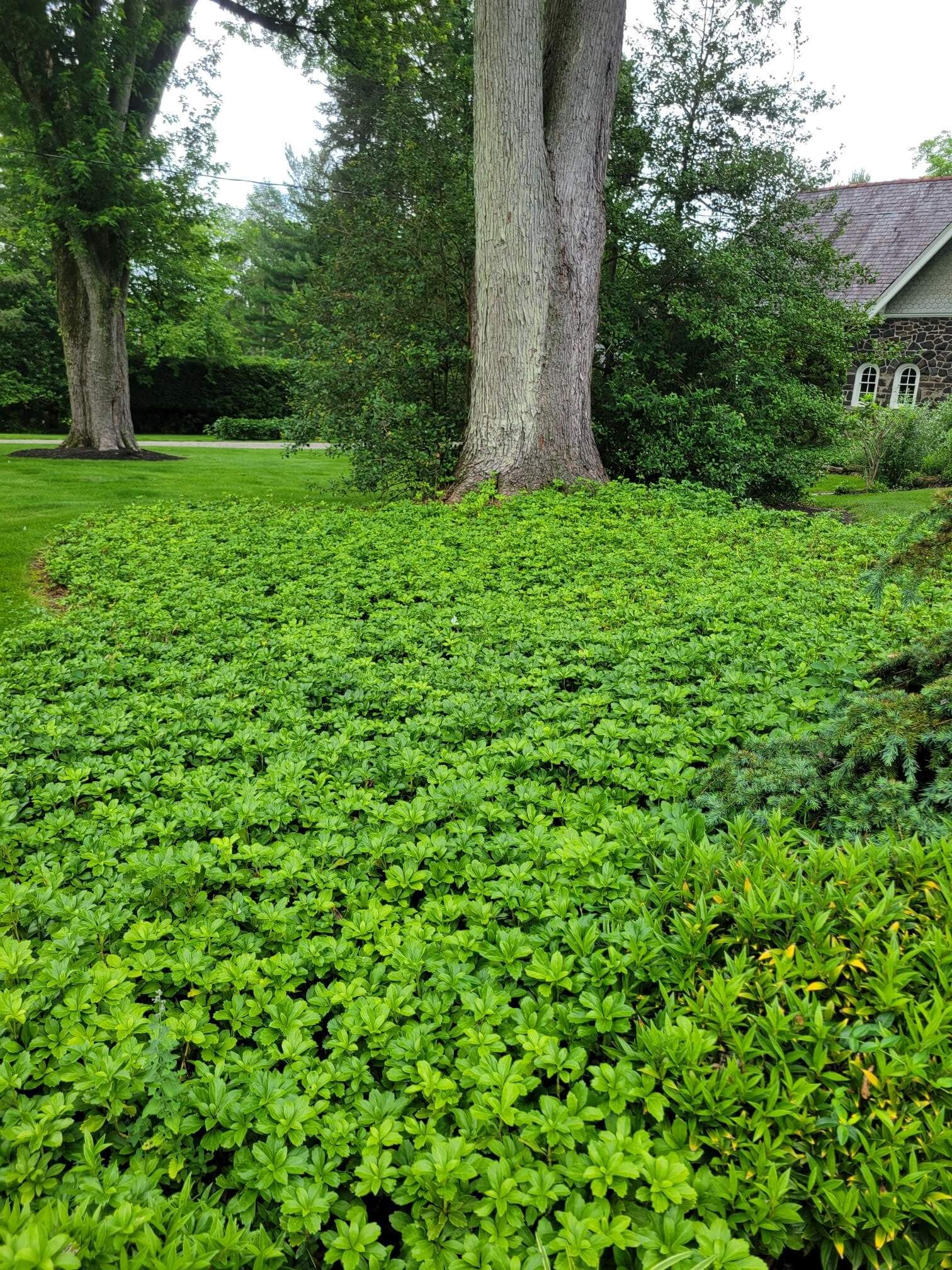
After

Before
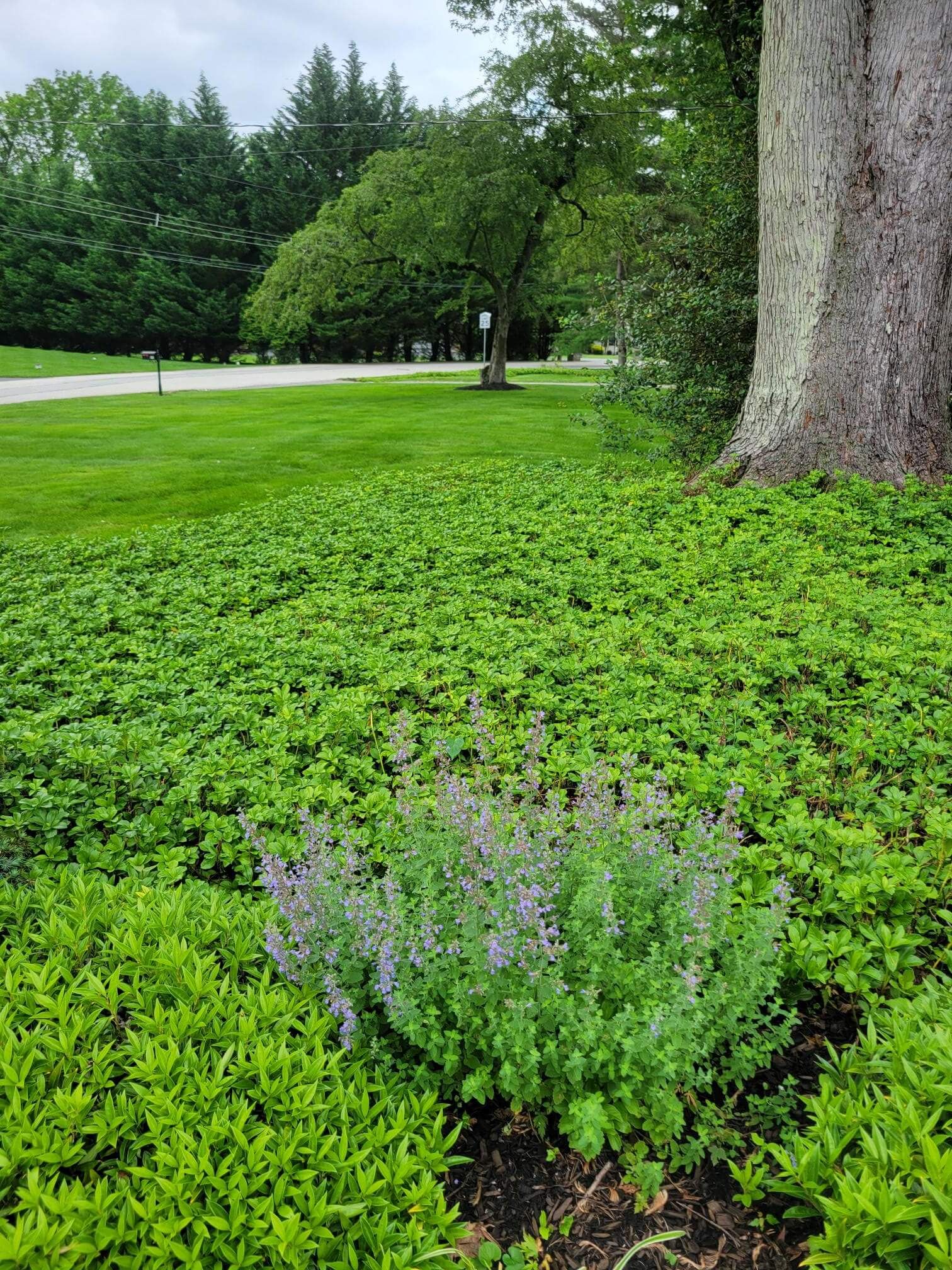
After
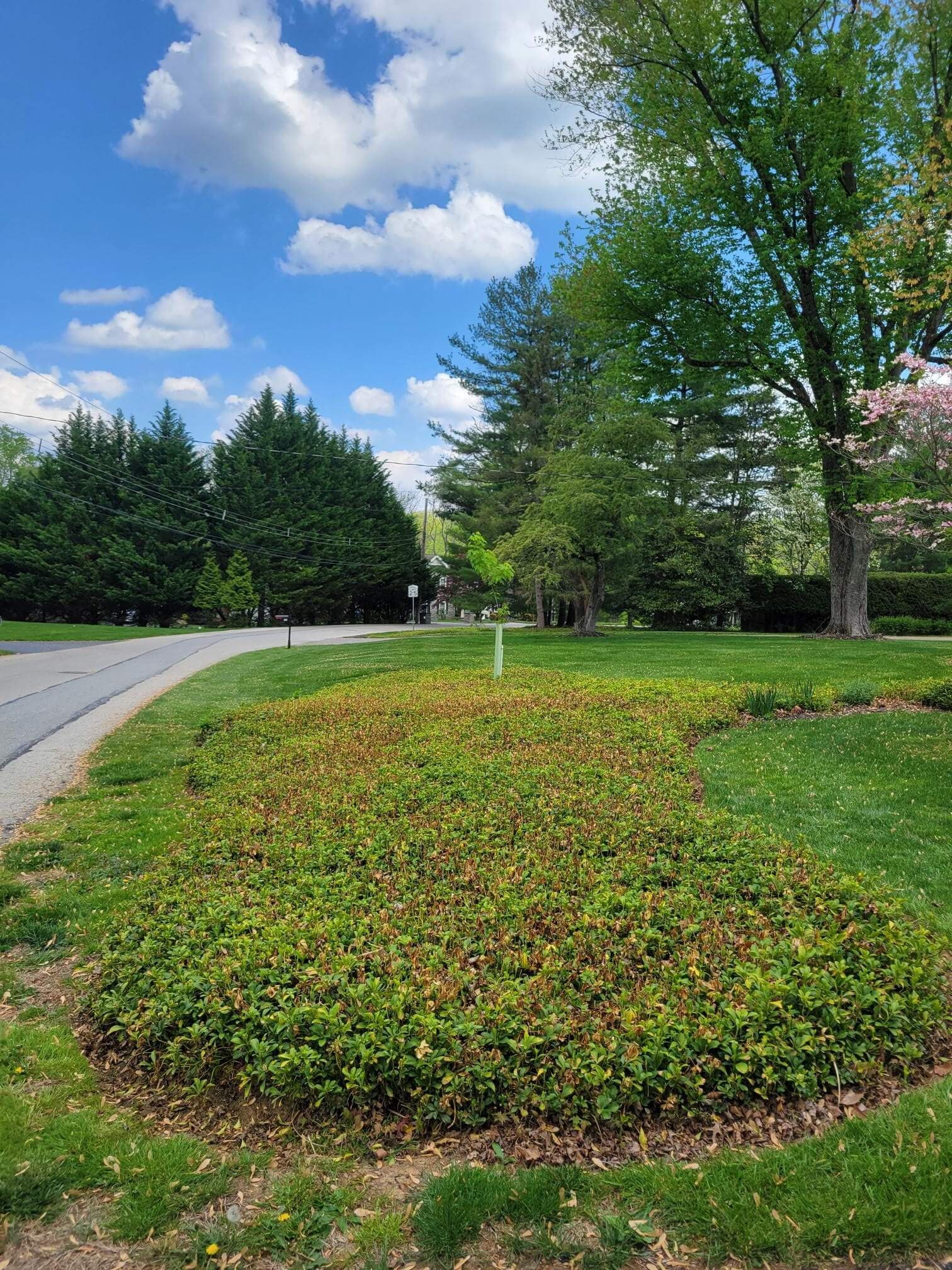
Before
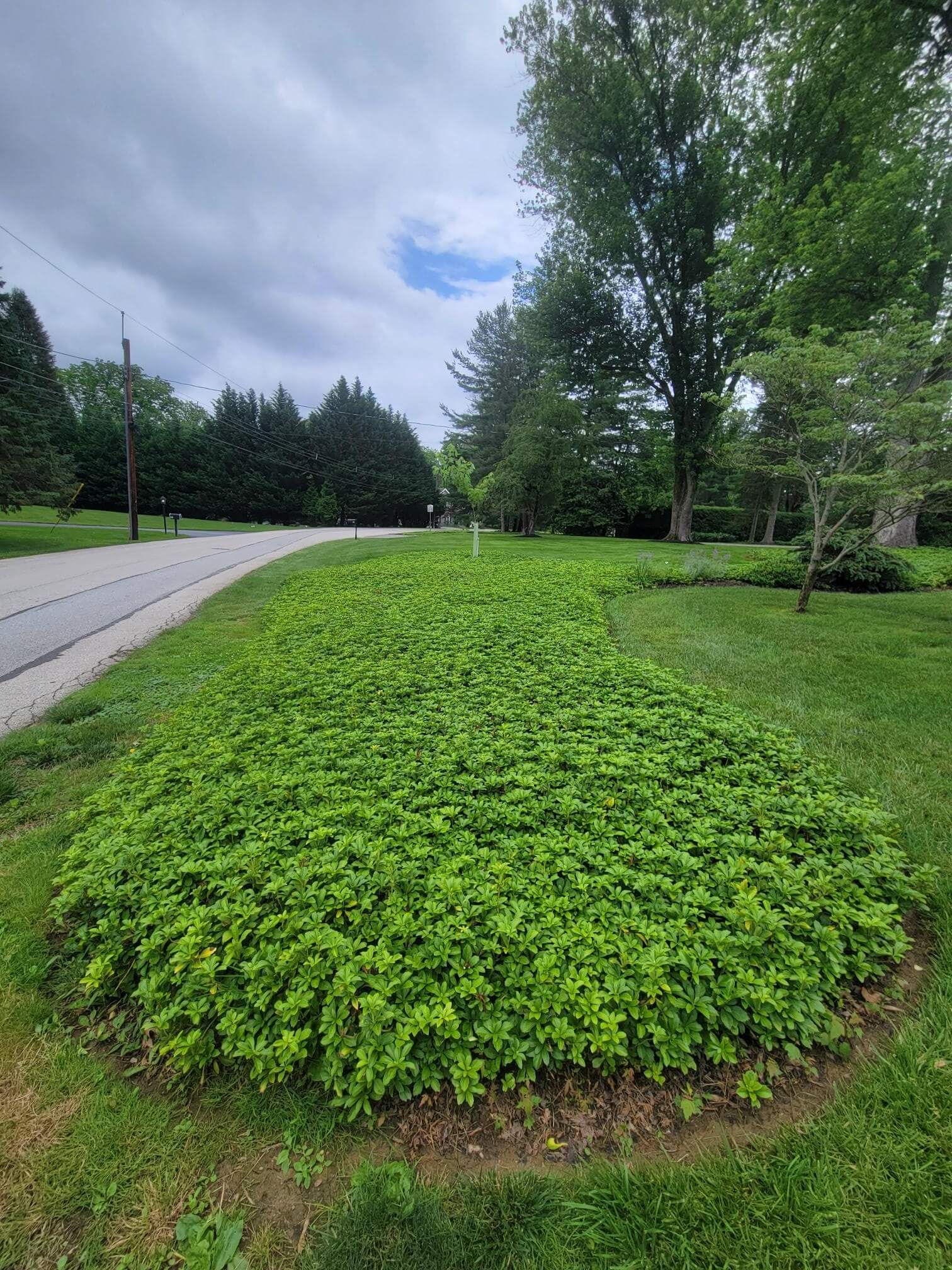
After
Beech Leaf Disease
Beech leaf disease was first identified in Ohio in 2012, based on strange foliar symptoms including dark banding of leaves between lateral leaf veins and mid-season curling of leaves. Over time, “infected” trees showed reduction of leaf density, branch dieback, and eventual tree death. Since 2012, this beech tree disorder has expanded to 15 states, and Pennsylvania is right in the middle of it, with first positive identification in Chester County and surrounding areas in 2022.
Since initial identification, this disease is now being found in a vast majority of woodland and landscape American beech trees (Fagus grandifolia) and is expected to infect landscape beech trees including European beech (Fagus sylvatica), copper beech (Fagus sylvatica var Purpureae), and tri-color beech (Fagus sylvatica var Roseomarginata). Recent research has found that there is a microscopic plant-parasitic worm (nematode) active in infected trees, and this nematode is assumed to be responsible for the foliar damage to infected trees, leading to tree death.
Field trials to date have demonstrated modest effectiveness of a common tree-care fungicide (thiabendazole) in controlling beech leaf disease. This material is injected into trees via macroinjection (high-volume), similar to treatments done to elm trees (Dutch elm disease) and sycamores (anthracnose).
At Burkholder Plant Health Care, we are equipped to do these macroinjections to beech trees, and hope that currently-recommended treatments can keep symptoms in check and slow tree decline until the field research catches up with this new, invasive, devastating tree disease. In addition to applying industry-standard treatments for this tree disease, we have developed our own experimental approach to management of beech leaf disease. Summer 2025 is the first season of roll-out of our experimental treatments…stay tuned!
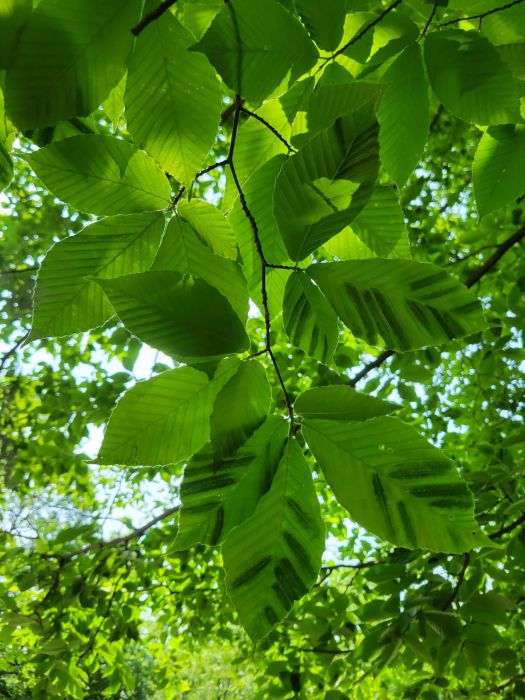
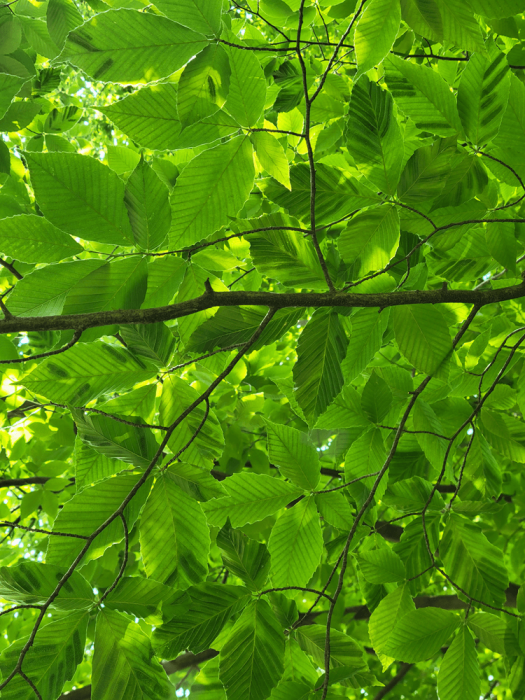
Let Burkholder PHC Protect Your Valuable Landscape Trees
Are your trees looking less than healthy? Burkholder PHC is here to help. Our team of certified arborists and plant specialists is well-versed in identifying and treating evergreen tree diseases, staying up-to-date with the latest research, and utilizing the most effective treatment methods. If you are concerned about pachysandra collapse, beech leaf disease or other Main Line plant health problems, schedule a free consultation with Burkholder PHC today.

